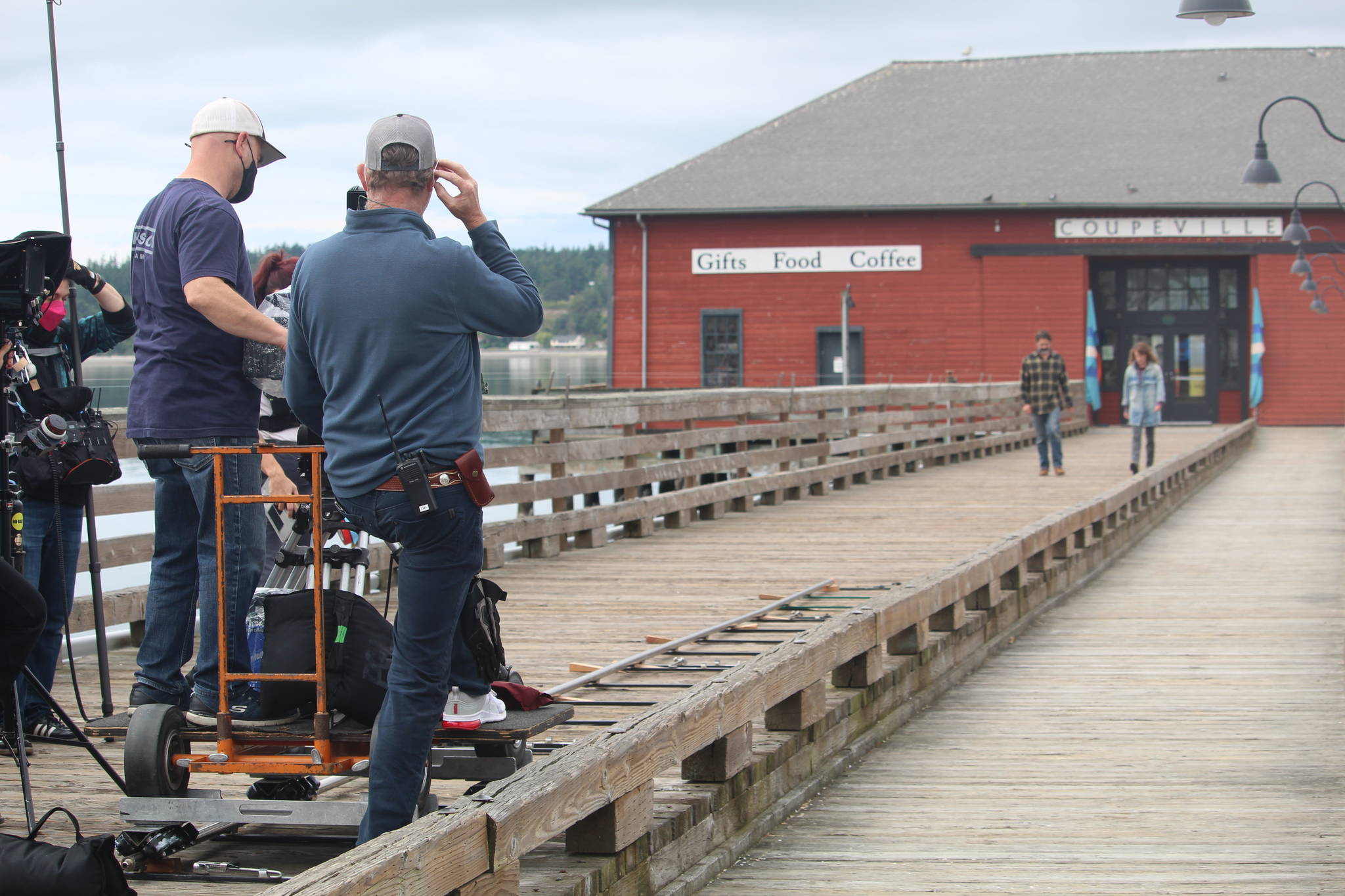Cameras are rolling on Whidbey Island, where a group of independent filmmakers have found a home for their story, “Midday Black, Midnight Blue.”
This feature-length film stars Chris Stack as Ian, a man coping with grief and mental illness as he tries to find closure from the death of his lover, Liv, played by Samantha Soule, who also co-wrote and is co-directing the film with Daniel Talbott.
Though the crew originally meant to film and set the story in the Great Lakes region, they turned to Whidbey Island when their Michigan filming location fell through.
“We had to make a very sudden pivot, and we thought to ourselves, ‘Well, where does this script really want to be?’ and everyone just sort of said, almost in unison, ‘Washington,’” said producer Lovell Holder, who also plays a small role in the film. “This feels like a Pacific Northwest story.”
Washington Filmworks Film Commissioner Amy Lillard said she was grateful the original location didn’t work out, because the “Midday Black” team has been such a joy to work with.
“I like to say that we stole it away from that other state,” Lillard joked.
Beyond the pleasure of working with such an affable cast and crew, Whidbey residents also benefit from the film in other ways. Lillard said movies shot on Whidbey substantially benefit the local economy as filmmakers spend money on things such as props and catering.
Whidbey locals will also get to enjoy the simple excitement of seeing hometown landmarks on the silver screen. The film won’t be finished until next year, but when it becomes available Whidbey residents can expect to see familiar locations such as the Coupeville Wharf and the Little Red Hen Bakery.
The crew also plans to film on Suva, a 1920s schooner that was brought back to Coupeville by Mark Saia. Saia, who worked in the film industry himself when he lived in California, has spent the last several weeks making repairs and preparing Suva for the cameras.
“We’re really honored to be part of the film,” Saia said. “They’re very heartfelt when we talk about Suva in the movie and what it represents to them.”
The team said they found Whidbey Island and its residents to be generous and welcoming hosts.
“It really is a unique culture here, where everyone is trying to get the ball across the finish line,” Holder said.
“We’re already hunting for projects that we can bring back (to Whidbey),” Soule added.
The film itself is sure to be an emotional journey, as the story was born from a trying experience all viewers will have in common: COVID-19.
Soule said the story is meant to convey the isolated feeling experienced worldwide during the pandemic year.
“When we were first envisioning this, it was at the peak of the pandemic, so we were like, ‘Okay, let’s write a story that largely takes place inside someone’s head,’” she said.
Dreary though the prospect of reliving pandemic loneliness might seem, the film is also overcast with hope.
“Life is there,” Soule said about the film’s theme. “You just have to reach out and find the ways that you can fight your way out of your own inner labyrinth.”



